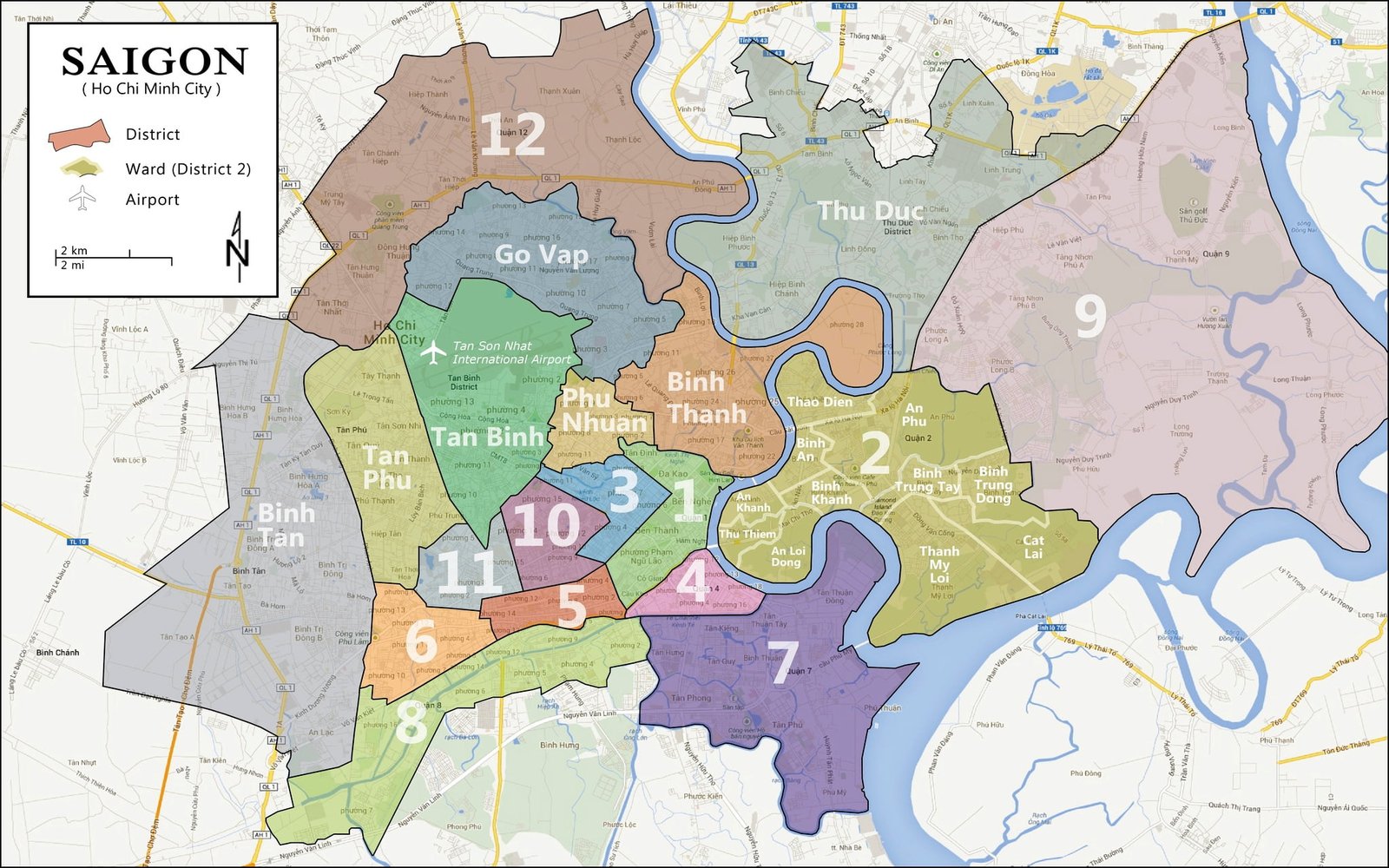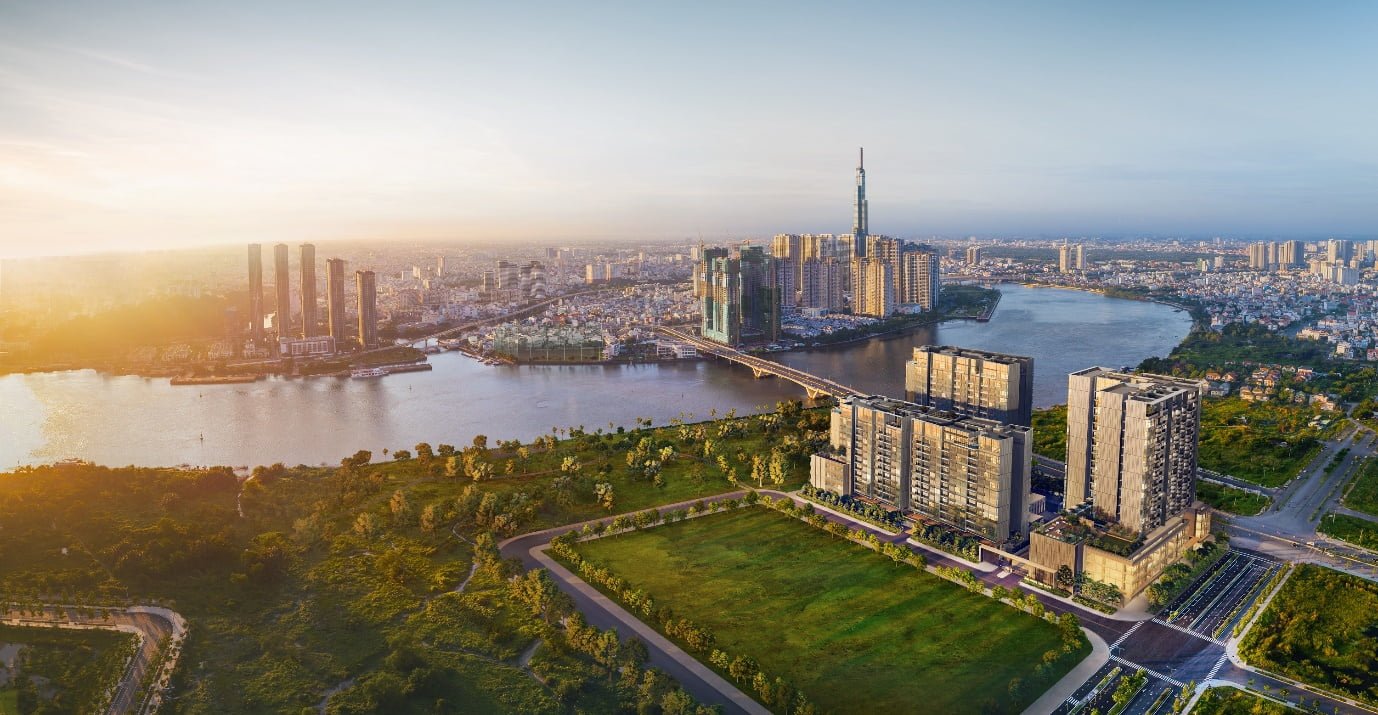Ho Chi Minh City (HCMC), Vietnam’s commercial capital, is rapidly evolving into a megacity, a dynamic hub of growth, innovation, and regional integration. Let’s explore why it’s an attractive investment destination:
| Fact Category | Data |
|---|---|
| Location | Southern Vietnam, Mekong River Delta region |
| Administrative Status | Centrally-governed city (same level as provinces) |
| Area | 2,061 square kilometers |
| Population (2023 estimate) | Approximately 9 million (swells daily due to commuters) |
| GDP Growth (2022) | 9.03% (exceeding national average) |
| Economic Structure | Services (dominant), Industry, Agriculture & Fisheries |
| Key Industries | Manufacturing, Technology, Finance, Tourism, Retail, Logistics |
| Key Resources | Skilled labor force, universities, international airport, seaports, dynamic consumer market |
| Infrastructure | Expanding metro system, major expressways under development, river and seaport access |
| Investment Incentives | Tax breaks in industrial zones and high-tech parks, support for innovation and sustainable projects |
Foundations of HCMC’s Investment Appeal
Economic Powerhouse: HCMC contributes 22% of Vietnam’s GDP and attracts 50% of the nation’s FDI, despite a relatively small geographic footprint.
Population Boom: With 8.7 million residents and a daily influx of workers, HCMC’s population density surpasses Shanghai’s. Annual migration fuels further growth.
Entrepreneurial Spirit: Over 44,000 new businesses registered in 2018 alone, showcasing the city’s vibrant startup scene.
Regional Integration: As the heart of the Southern Key Economic Region, HCMC drives economic development across multiple provinces.
Agriculture, Forestry, & Fisheries: Niche Opportunities in HCMC
While Ho Chi Minh City’s focus is primarily on industry and services, there are potential investment niches within traditional sectors, particularly catering to the city’s large market and evolving consumer preferences:
High-Tech Urban Agriculture: HCMC’s affluent market and land constraints create demand for innovative techniques:
- Vertical Farming: Growing high-value crops (vegetables, herbs, specialty fruits) using space-efficient, climate-controlled systems.
- Hydroponics and Aquaponics: Production of fresh produce and fish in closed-loop systems, ideal for rooftops or limited spaces.
Peri-Urban Agri-Ventures: The outskirts of HCMC offer land for specialized, high-value farming:
- Organic Specialty Crops: Meeting the demand for premium, locally sourced fruits, vegetables, and herbs for the city’s hotels and upscale market.
- Floriculture and Ornamental Plants: Supplying both the domestic market and the growing export market for flowers and decorative plants.
Sustainable Aquaculture: HCMC’s coastal areas and river networks support aquaculture development:
- Intensive Shrimp Farming: Focusing on sustainable, disease-resistant strains for high yields and greater environmental responsibility.
- Niche & Ornamental Fish: Exploring high-demand, premium fish species for both domestic and export markets.
Eco-Forestry Ventures: Small-scale forestry projects on the city’s fringes could combine income generation with ecological aims:
- Fruit Tree Plantations: Cultivating fast-growing or high-value fruit trees alongside soil conservation and biodiversity enhancement.
- Eco-tourism Integration: Small-scale ecotourism ventures combined with responsible forestry generate revenue and raise ecological awareness.
Government Support & Incentives
- Focus on Sustainability: Ho Chi Minh City prioritizes projects using modern, environmentally conscious agricultural and aquaculture practices.
- Potential Incentives: Eligible ventures in these areas could qualify for tax benefits, land access support, and investment incentives.
- Technology & Innovation: The city’s ‘smart city’ vision extends to agriculture, with support for tech-driven farming methods.
- University Collaboration: Partnerships with HCMC’s universities and research institutes can ensure best practices, technical expertise and a skilled workforce.
Factors Driving HCMC’s Growth
MNC Magnet: Multinational corporations and tech companies favor HCMC for its skilled workforce, universities, and infrastructure.
Smart City Vision: HCMC aims to be Vietnam’s first smart city. Initiatives like the iSCT app and the Thu Thiem Eco-Smart City project are transforming the urban landscape.
Infrastructure Expansion: Expressways, rail links, and port upgrades are enhancing connectivity within the Southern Key Economic Region, with HCMC as its central hub.
Government Masterplan: HCMC Zone masterplan aims to create a multi-core economic zone by 2030, optimizing land use and resource distribution across the region.
Key Investment Sectors in HCMC
Technology & Innovation: HCMC’s tech hub status offers opportunities in software, e-commerce, and IT-enabled services.
Manufacturing: The city and surrounding provinces offer labor pools and industrial zones catering to diverse manufacturing sectors.
Logistics: Modernized ports, expanding transport networks, and a growing consumer base make HCMC a regional logistics focal point.
Services: Retail, hospitality, healthcare, and education are thriving sectors driven by urbanization and rising incomes.
Real Estate: Development projects, both residential and commercial, address the needs of HCMC’s growing population and business community.
The HCMC Opportunity
With its strategic location, pro-business environment, skilled workforce, and commitment to sustainable growth, Ho Chi Minh City represents a compelling investment opportunity within Vietnam and broader Southeast Asia. While infrastructure bottlenecks remain, the city’s economic trajectory and its pivotal role in regional development make it a place where visionary investors can capitalize on future growth.
Originally posted 2024-03-25 23:04:09.


